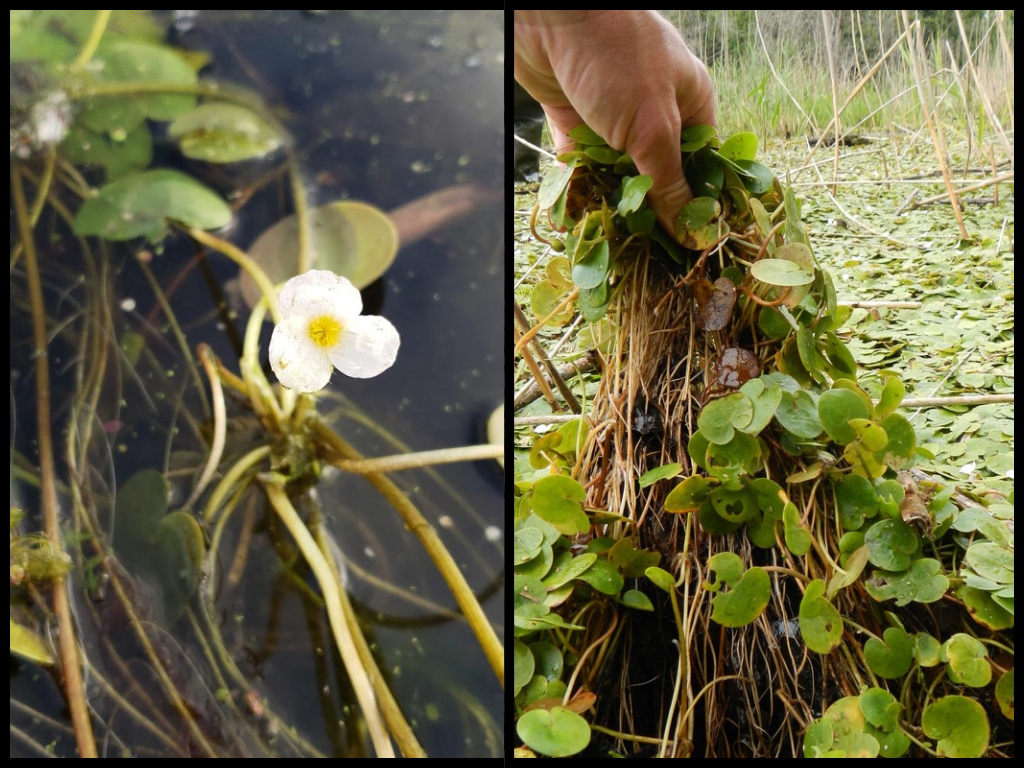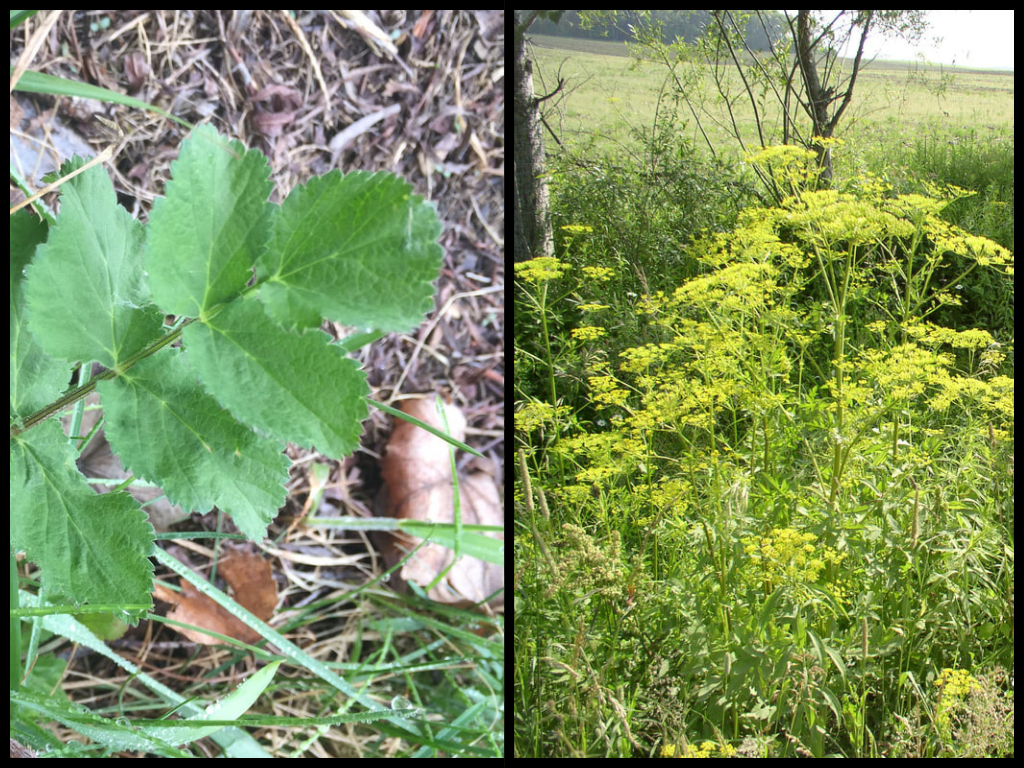Identifying & Managing Invasive Species
What is an invasive species?
Invasive species are non-native plants, animals, or organisms that harm local ecosystems, economies, or human health. Early detection and proper management are key to protecting our natural resources.
Why treatment matters?
Invasive species are non-native plants, animals, or organisms that harm local ecosystems, economies, or human health. Early detection and proper management are key to protecting our natural resources.
North Country CISMA
(Cooperative Invasive Species Management Area)
About NCCISMA
The North Country Cooperative Invasive Species Management Area (NCCISMA) is a regional partnership working across Lake, Mason, Mecosta, Missaukee, Osceola, and Wexford counties. Their mission is to combat invasive species through collaboration, outreach, and hands-on support. Whether it's helping landowners identify invasive plants, offering treatment advice, or providing on-site services, NCCISMA is a key resource for protecting our local landscapes.
NCCISMA Strike Team For Hire
NCCISMA's strike team can be hired at cost to control high priority invasive species on your property. This program is best suited for small infestations where it would be cost prohibitive to hire a contractor. For more information about these species or other invasives check out:
State of Michigan: https://www.michigan.gov/invasives/id-report
If you have questions or would like a quote please contact : Emily Fredricks, Invasive Species Technician NCCISIMA (231) 371-0244 or emily.fredricks@macd.org
NCCISMA - High Priority Invasive Species
-

Bristly Locust
Description:
Bristly locust is a large shrub that can reach 10 feet high and 15 feet wide, bristly locust is known for its bright pink, pea-like flowers. It thrives in many types of soils and can spread quickly, forming dense thickets. These thickets displace other plants and reduce wildlife habitat. -

Eurasian Phragmites
Description:
Eurasian phragmites is a tall grass that grows 6–13 feet high and is commonly found in wetlands, roadside ditches, and along rivers, lakeshores, and streams. It forms dense stands that dominate wetland areas, reducing plant diversity. -

European Frogbit
Description:
European frogbit is a free-floating aquatic plant that forms thick mats with tangled underwater roots. Its round leaves resemble small water lilies, and it produces white, cup-shaped flowers with yellow spots at the base. These mats block sunlight and reduce oxygen, harming fish and native plants. -

Garlic Mustard
Description:
Garlic mustard is a biennial plant with a garlic odor when crushed. First-year plants form low rosettes with heart-shaped leaves, while second-year plants grow up to 3 feet tall and produce small white flowers. It spreads quickly in forests, prairies, and along roadsides. -

Oriental Bittersweet
Description:
Oriental bittersweet is a woody vine that climbs trees and shrubs, often weighing them down or toppling them. It produces red berries with a yellow outer skin that splits open when ripe. The vine spreads rapidly in many environments, from full sun to full shade.
-
Reason for concern:
Cutting encourages new growth from the roots, allowing the shrub to spread quickly. All parts of the plant are mildly poisonous and can be harmful if eaten. -
Reason for concern:
This grass forms dense stands that crowd out other wetland plants. Pulling, cutting, or burning often makes it spread faster, and even small root fragments can regrow. -
Reason for concern:
European frogbit reproduces rapidly, forming mats that block sunlight and reduce oxygen in the water. These mats interfere with fish, waterfowl, and even boat traffic. -
Reasons for Concern:
Garlic mustard outcompetes native plants, creating dense patches in forests and along trails. Its roots release chemicals that prevent the growth of surrounding vegetation. -
Reasons for Concern:
This vine coils around trees and shrubs, cutting off nutrients and often killing its host. It spreads quickly, shades out other plants, and can overwhelm entire areas.
-

Swallow-wort
Description:
Swallow-wort, which includes both black and pale types, is a perennial vine that grows 2–6 feet tall. Black swallow-wort has dark purple to black flowers, while pale swallow-wort produces pink flowers. Both develop seedpods similar to milkweed that split open in mid-summer to release wind-borne seeds. -

Tree of Heaven
Description:
Tree of heaven is a fast-growing tree with narrow leaves that give off a peanut butter-like smell when crushed. It thrives in a wide variety of soils and light conditions, making it highly adaptable. This tree is commonly planted in urban areas and is also found along the edges of woodlots and disturbed lands. -

Wild Parsnip
Description:
Wild parsnip is a biennial plant that grows as a low rosette in its first year and produces tall stalks with clusters of yellow flowers in its second year. The stalks reach 1–5 feet tall and are topped with umbrella-shaped blooms. It prefers open, sunny areas but tolerates light shade and many soil types, often spreading along roadsides, fields, and disturbed sites. -

Giant/Japanese Knotweed
Description:
Giant and Japanese knotweed (sometimes called Michigan bamboo, though not native to the state) are shrubs that grow 3–12 feet tall with hollow, bamboo-like stems. They produce clusters of greenish-white flowers, and stalks may die back or persist through winter. Once used in landscaping, knotweed now spreads into natural areas. -

Spotting Invasive Species
Spotting Invasive Species:
NCCISMA provides resources and guidance to help residents recognize high priority invasive plants in Mason and Lake Counties. Early identification allows property owners to take action quickly and protect local ecosystems from being overrun by these species.
-
Reason for concern:
Swallow-wort spreads quickly and can cover native plants, reducing biodiversity. Its wind-dispersed seeds travel long distances, and its sap is toxic to livestock in hay and to monarch butterfly larvae. -
Reason for concern:
Cutting or injuring tree-of-heaven triggers new shoots from the roots, allowing it to spread rapidly. A single tree may remain contained for years, then suddenly expand and dominate an area. -
Reason for concern:
Wild parsnip sap causes skin to become highly sensitive to sunlight. Contact can result in painful rashes, blistering, and long-lasting discoloration. -
Reasons for Concern:
Knotweed has deep, strong roots that can damage structures and spread quickly. Cutting or mowing does not control it and may worsen the problem, and eradication is extremely difficult once established. -
Getting Help:
Residents can request a free site visit from the strike team to confirm plant identification and learn best management practices. Staff provide advice and support for controlling invasive species on private property.
Bristly Locust
-
Bristly locust is a large shrub that can reach 10 feet high and 15 feet wide, bristly locust is known for its bright pink, pea-like flowers. It thrives in many types of soils and can spread quickly, forming dense thickets. These thickets displace other plants and reduce wildlife habitat.
-
Cutting encourages new growth from the roots, allowing the shrub to spread quickly. All parts of the plant are mildly poisonous and can be harmful if eaten.
Garlic Mustard
-
Bristly locust is a large shrub that can reach 10 feet high and 15 feet wide, bristly locust is known for its bright pink, pea-like flowers. It thrives in many types of soils and can spread quickly, forming dense thickets. These thickets displace other plants and reduce wildlife habitat.
-
Cutting encourages new growth from the roots, allowing the shrub to spread quickly. All parts of the plant are mildly poisonous and can be harmful if eaten.
Garlic Mustard
-
Bristly locust is a large shrub that can reach 10 feet high and 15 feet wide, bristly locust is known for its bright pink, pea-like flowers. It thrives in many types of soils and can spread quickly, forming dense thickets. These thickets displace other plants and reduce wildlife habitat.
-
Cutting encourages new growth from the roots, allowing the shrub to spread quickly. All parts of the plant are mildly poisonous and can be harmful if eaten.
Eurasian Phragmites
-
Eurasian phragmites is a tall grass that grows 6–13 feet high and is commonly found in wetlands, roadside ditches, and along rivers, lakeshores, and streams. It forms dense stands that dominate wetland areas, reducing plant diversity.
-
This grass forms dense stands that crowd out other wetland plants. Pulling, cutting, or burning often makes it spread faster, and even small root fragments can regrow.
Oriental Bittersweet
-
What should we know about the services you provide? Better descriptions result in more sales.
-
What should we know about the services you provide? Better descriptions result in more sales.
Oriental Bittersweet
-
What should we know about the services you provide? Better descriptions result in more sales.
-
What should we know about the services you provide? Better descriptions result in more sales.
European Frogbit
Swallow-wort
-
What should we know about the services you provide? Better descriptions result in more sales.
-
What should we know about the services you provide? Better descriptions result in more sales.
Swallow-wort
-
What should we know about the services you provide? Better descriptions result in more sales.
-
What should we know about the services you provide? Better descriptions result in more sales.
-
European frogbit is a free-floating aquatic plant that forms thick mats with tangled underwater roots. Its round leaves resemble small water lilies, and it produces white, cup-shaped flowers with yellow spots at the base. These mats block sunlight and reduce oxygen, harming fish and native plants.
-
European frogbit reproduces rapidly, forming mats that block sunlight and reduce oxygen in the water. These mats interfere with fish, waterfowl, and even boat traffic.
Mason-Lake Conservation District (MLCD) Crew
About MLCD Crew
MLCD has a dedicated field crew available to assist landowners with managing invasive plants. The team handles small-scale projects, provides follow-up herbicide treatments, and helps remove aggressive shrubs such as autumn olive, Russian olive, and honeysuckle. They also offer hemlock woolly adelgid treatments for a cost, continuing past grant-supported programs.
Residents can request a free project planning visit or a service quote. The crew works directly with landowners to protect forests, waterways, and wildlife habitat while providing hands-on conservation support.
Julia Place, Hunter Spencer, Bailey Watson, Adam Glendening, Seth Hunt
-

Autumn Olive
Description:
A fast-growing shrub reaching up to 20 feet tall. It has bright green leaves with silver undersides, fragrant spring flowers, and clusters of red speckled berries in the fall. All parts of the plant often appear with a silver or bronze sheen. -

Russian Olive
Description:
A thorny shrub or small tree that can grow up to 30 feet tall. It has loosely arranged branches, silvery-green leaves with white undersides, and small yellow flowers that bloom in early summer. Its berries provide food later in the season. -

Wild Parsnip
Description:
Wild parsnip is a biennial plant that grows as a low rosette in its first year and produces tall stalks with clusters of yellow flowers in its second year. The stalks reach 1–5 feet tall and are topped with umbrella-shaped blooms. It prefers open, sunny areas but tolerates light shade and many soil types, often spreading along roadsides, fields, and disturbed sites. -

Giant/Japanese Knotweed
Description:
Giant and Japanese knotweed (sometimes called Michigan bamboo, though not native to the state) are shrubs that grow 3–12 feet tall with hollow, bamboo-like stems. They produce clusters of greenish-white flowers, and stalks may die back or persist through winter. Once used in landscaping, knotweed now spreads into natural areas.
-
Reason for concern:
Originally planted for wildlife, autumn olive has proven highly invasive. It spreads quickly, shades out native plants, and alters soil nutrients, threatening prairies, savannas, and open woodlands. Birds and mammals disperse its seeds, making control difficult. -
Reason for concern:
Russian olive displaces native plants and reduces food sources needed by birds, butterflies, and other wildlife. While it produces berries, it does not support insect populations during the growing season, limiting resources critical for songbird nestlings. -
Reason for concern:
Wild parsnip sap causes skin to become highly sensitive to sunlight. Contact can result in painful rashes, blistering, and long-lasting discoloration. -
Reasons for Concern:
Knotweed has deep, strong roots that can damage structures and spread quickly. Cutting or mowing does not control it and may worsen the problem, and eradication is extremely difficult once established.
Meet the Team: Who to Contact
Zach Peklo
Program Coordinator
Plant ID & management practices for non-high priority species
Emily Fredricks
Invasive Species Tech
Strike team for hire, high-priority species ID and treatment advice
Michael Ramsey
Public Engagement Specialist
Requesting or planning outreach and events










